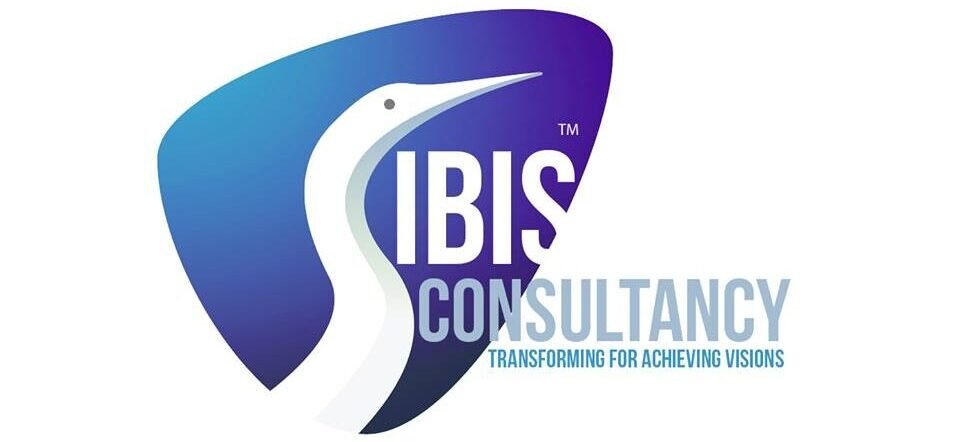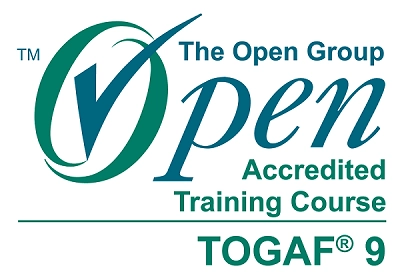TOGAF® Enterprise Architecture: Practitioner
- Course Duration: 20+h
- qualification: TOGAF
About this course
Introduction
The TOGAF Enterprise Architecture Practitioner course validates a person’s knowledge, comprehension, and ability to apply the TOGAF Standard, 10th Edition. After completion, the learner will be confident in developing, sustaining, and using an Enterprise Architecture.
Individuals who complete the course will gain knowledge on how to use the TOGAF approach. This includes being able to transform and manage change, use the TOGAF method, and apply TOGAF techniques.
Take the first step towards gaining your TOGAF certification today.
Who is this course aimed at?
- Professionals in architectural roles who want to achieve a globally recognized qualification
- Enterprise Architects looking to contribute to or lead a team engaged in Enterprise Architecture activities
- Individuals expected to apply the TOGAF approach to develop, sustain, and transform domain architectures
- Individuals actively contributing to organizational transformation
- Individuals working in Agile environments who need to understand and apply Enterprise Architecture using the TOGAF Standard
What will you learn by taking this course?
Certified individuals will be able to demonstrate their ability to apply:
- The TOGAF approach to transform and manage change
- The TOGAF method to a variety of transformation efforts in an organization
- TOGAF techniques to current and future architecture projects
Why should you take this course?
- This is a self-paced course, allowing students to structure learning around their own schedules
- Content is divided into easily digestible videos
- Consistent review of topics covered in Comprehension Check questions
- A practice exam and regular knowledge checks help students prepare for the certification exam
- The TOGAF Enterprise Architecture Learning Studies enables candidates to show they can use the TOGAF Standard in different organizational scenarios.
- Successful completion of the TOGAF Learning Studies allows candidates to obtain The Open Group Applied Enterprise Architecture Practitioner badge
- Successful students can demonstrate their understanding of the core TOGAF Enterprise Architecture principles and concepts. This will help them contribute to EA teams
- Worried about TOGAF certification costs? This course comes with a FREE exam voucher, and a FREE resit with Exam Pledge (T&Cs apply).
- The course is fully accredited by The Open Group
Course Outline
TOGAF Practitioner
Module zero introduces you to the course main features, learning plan, aims and objectives, and structure.
It also offers a course guide, diagram packs, a further reading and links document and links to download essential copies of the framework publications.
Module 1 defines what Enterprise Architecture is and looks at Architecture Governance and Architecture Security. The module includes a scenario, where individuals can demonstrate application of their knowledge.
Module 2 looks at how Agile development and digital business is managed in TOGAF and iteration in the TOGAF method.. The module includes a scenario, where individuals can demonstrate application of their knowledge.
Module 3 looks at Phase A of the ADM and how stakeholders are managed during Architecture work. It explores key aspects of phase A, Architecture views and viewpoints and alternatives and trade-offs. The module includes a scenario, where individuals can demonstrate application of their knowledge.
Module 4 explores Phases B, C and D of the ADM. It looks at the inputs, outputs, steps and approach for each phase.
It also explores security concerns related to each phase. The module includes a scenario, where individuals can demonstrate application of their knowledge.
Module 5 explores Phases E, F and G of the ADM. It looks at the inputs, outputs, steps and approach for each phase.
It also explores security concerns related to each phase. The module includes a scenario, where individuals can demonstrate application of their knowledge.
Module 6 looks at how Change is Managed in Phase H of the ADM and how requirements are managed throughout the ADM in the Requirements Management Phase.
The module includes a scenario, where individuals can demonstrate application of their knowledge.
Module 7 looks at key concepts that support the ADM.
These include Business Scenarios, Migration Planning Techniques, Compliance reviews and the Architecture Landscape.
Module 8 explores the Architecture Repository and the Enterprise Metamodel, which is used to organize Architecture content.
The module includes a scenario, where individuals can demonstrate application of their knowledge.
Module 9 contains a series of exam preparation exercises based on real-world scenarios and a timed practice exam.
Module 10 provides information on booking the exam and other courses of interest.
Exam/Assessment
Pearson Vue are authorized exam providers for TOGAF, IT4IT and ArchiMate certification. They host exams worldwide through a network of test centers.
This course comes with a practice TOGAF Enterprise Architecture Practitioner (Part 2) exam. There are answers included to aid students preparing for their official Part 2 exam.
Candidates will also receive a FREE exam voucher and a free resit via Exam Pledge (T&Cs apply).
When you want to use your free exam voucher, simply contact support@goodelearning.com.
Exam voucher requests are typically processed within 2-5 working days. Students must request their exam voucher within the course access period which starts from the date of purchase. For more information, please visit our Support & FAQs page.
TOGAF Practitioner
- This is a multiple-choice exam
- There are 8 scenario-based questions in total
- Each question is worth between 0 and 5 marks
- Candidates have 90 minutes to complete the exam
- The exam is open book – you can make use of certain resources or materials during the exam
- The pass mark for the exam is 60%: you must score at least 24 out of a total of 40 points to pass
What do you get?
- 6 months’ access from the date of purchase to complete your training
- 20+ hours of online training content
- Exam vouchers
- Access through multiple devices
- Offline player for studying on the move
- Tutor support
FAQs
What is enterprise architecture?
‘Enterprise architecture’ describes the role of creating ‘architectures’ of IT infrastructures.
This includes how the architectures are put together and how different elements interact, providing a clearer perspective.
Organisations often employ TOGAF certified architects to help them align architectures with business goals.
This can be vital when supporting large-scale enterprise transformation, IT growth, and organisational change.
What is TOGAF?
TOGAF is an acronym for The Open Group Architecture Framework.
The Open Group works with customers, suppliers, and standards organisations such as Consortia.
They collaborate to capture and clarify technology requirements, establish standards and policies, and share best practices.
What kind of organization can benefit from the TOGAF standard?
The TOGAF standard is used by organizations of almost every size, sector, and industry.
Enterprise Architecture is becoming a common practice for maximizing efficiency and managing complex business strategies.
This has led to an increase in demand for TOGAF certified architects.
While any organization can use the TOGAF Standard, only a certified architect has been trained how to utilise it properly.
What is the TOGAF certification path?
Students begin with TOGAF Enterprise Architecture Foundation (Part 1).
Passing this allows them to proceed to the TOGAF Enterprise Architecture Practitioner (Part 2) exam.
There are no prerequisites for taking the TOGAF Business Architecture (BA) exam. The credential courses can be taken without passing an exam.
How much is a TOGAF certification worth?
According to Payscale, TOGAF-certified professionals can earn between $85,000 and $202,000 (or £39,000 and £202,000).
TOGAF-certified architects find work in various industries all over the world.
This is increasingly so due to collaboration between business and IT infrastructures becoming ever more essential for remaining competitive.
In what countries is the TOGAF standard popular?
The TOGAF framework is used worldwide, with certified professionals in over 130 countries.
Exams are commonly taken in the UK, USA, India, the Netherlands, and Australia, though architects can find work almost anywhere.
What are the benefits of TOGAF for businesses?
TOGAF is a beneficial tool for businesses to effectively pursue enterprise transformation and IT growth, while also ensuring their IT infrastructure is in line with business goals.
It provides examples and tutorials to help simplify EA programs and can help reduce the amount of time needed to be spent preparing for future programs.
How long is the TOGAF exam?
The TOGAF Foundation (Part 1) exam is 60 minutes and 40 questions long, and is strictly closed-book.
Students who are not native English-speakers can be allocated 30 minutes of extra time. The pass mark is 60%.
The TOGAF Practitioner (Part 2) exam is 90 questions long with eight questions and a 6-% pass mark.
Every Good e-Learning EA certification course comes with FREE exam vouchers and free resits via Exam Pledge.
The Exam Pledge offers free resits of the TOGAF exams in the event of a failed attempt.
What you will learn
Application of TOGAF®:
- Apply TOGAF® principles and methodologies to real-world scenarios, projects, and case studies, demonstrating proficiency in enterprise architecture practices.
Architecture Development and Documentation:
- Develop and document enterprise architectures using TOGAF® methods and techniques, including requirements analysis, solution design, and architecture governance.
Stakeholder Management:
- Manage stakeholder relationships and expectations throughout the enterprise architecture lifecycle, ensuring alignment with business objectives and priorities.
Architecture Implementation and Governance:
- Implement and govern enterprise architectures effectively, ensuring compliance with architectural standards and policies, and driving continuous improvement.
Architecture Maturity Assessment:
- Assess and improve the maturity of enterprise architectures using TOGAF® maturity models and assessment frameworks.
Enterprise Architecture Tools and Techniques:
- Apply various tools and techniques for enterprise architecture development, documentation, analysis, and visualization, enhancing the effectiveness and efficiency of architecture practices.
Enterprise Architecture Integration:
- Integrate enterprise architecture practices with other organizational processes and frameworks, such as ITIL®, COBIT®, and BPMN, to achieve synergies and maximize value.
By completing the TOGAF® Enterprise Architecture: Foundation & Practitioner (10th Edition, Parts 1 and 2) course, participants will have gained comprehensive knowledge and skills in enterprise architecture principles, methods, and techniques, enabling them to drive successful architecture initiatives within their organizations.
Benefits of this course
Advanced Knowledge and Skills:
- Participants deepen their understanding of TOGAF® concepts, methodologies, and best practices, gaining advanced knowledge and practical skills in enterprise architecture.
Enhanced Career Opportunities:
- Completion of the TOGAF® Practitioner course enhances participants’ credentials and career prospects in the field of enterprise architecture. It demonstrates proficiency in advanced architectural concepts and methodologies, making them valuable assets to organizations.
Improved Architecture Development and Management:
- Participants learn advanced techniques for architecture development, documentation, and management, enabling them to lead and execute architecture initiatives effectively within their organizations. They can tailor the Architecture Development Method (ADM) to suit specific project requirements and organizational needs.
Better Stakeholder Engagement and Communication:
- Participants deepen their understanding of stakeholder management and communication strategies, learning how to identify and prioritize stakeholders, manage their expectations, and effectively communicate architectural decisions and recommendations.
Optimized Architecture Governance:
- Participants gain insights into architecture governance principles and practices, enabling them to establish governance structures, define roles and responsibilities, and ensure compliance with architectural standards and policies.
Enhanced Value Proposition:
- Participants learn how to articulate the value proposition of enterprise architecture to key stakeholders, demonstrating the business benefits and ROI of architectural investments. This helps secure support for architecture initiatives and ensures alignment with business objectives.
Real-World Case Studies and Best Practices:
- Participants analyze real-world case studies and best practices in enterprise architecture, learning from successful architectural implementations and understanding the challenges and opportunities associated with architecture projects.
Continuous Professional Development:
- The TOGAF® Practitioner course provides participants with opportunities for continuous professional development in enterprise architecture. It equips them with advanced knowledge and skills that are relevant and applicable in today’s dynamic business environment.
Overall, the TOGAF® Enterprise Architecture: Practitioner course empowers participants to lead and execute architecture initiatives effectively, driving strategic alignment, optimizing resource utilization, and achieving business success through enterprise architecture.

